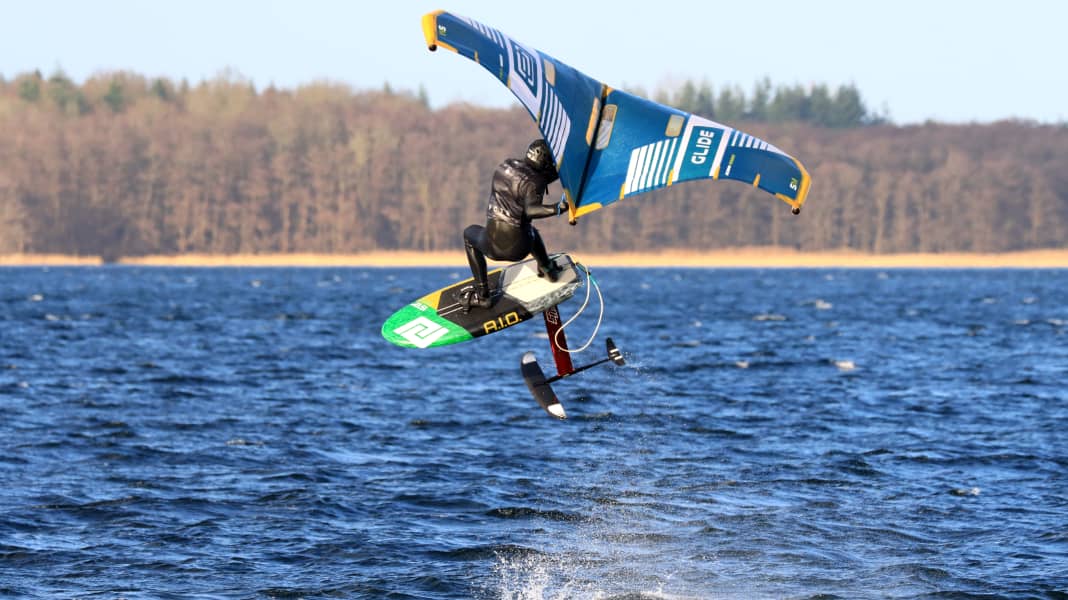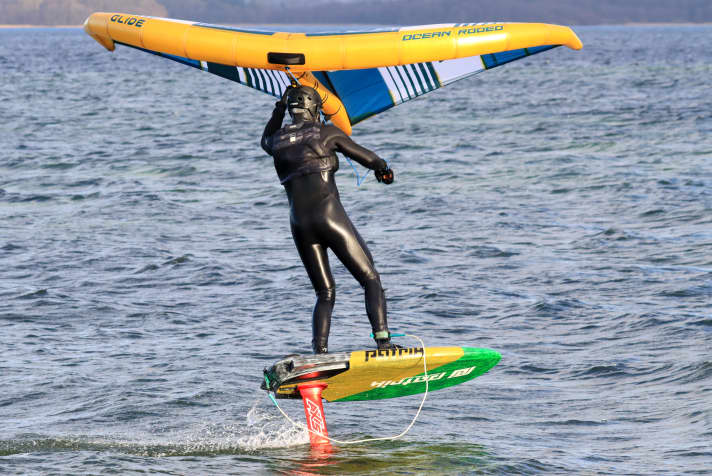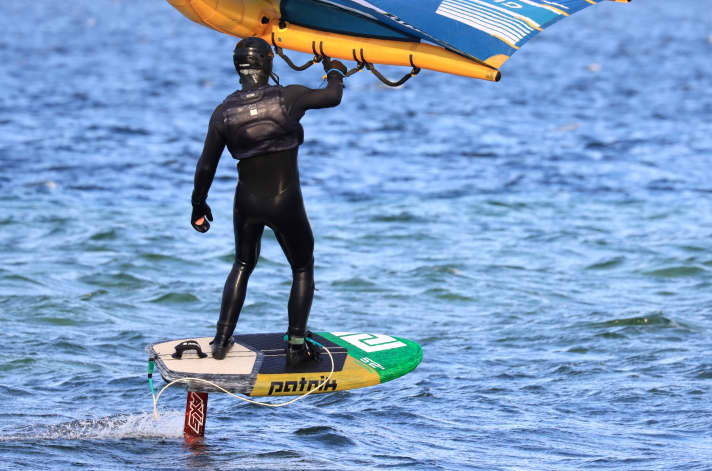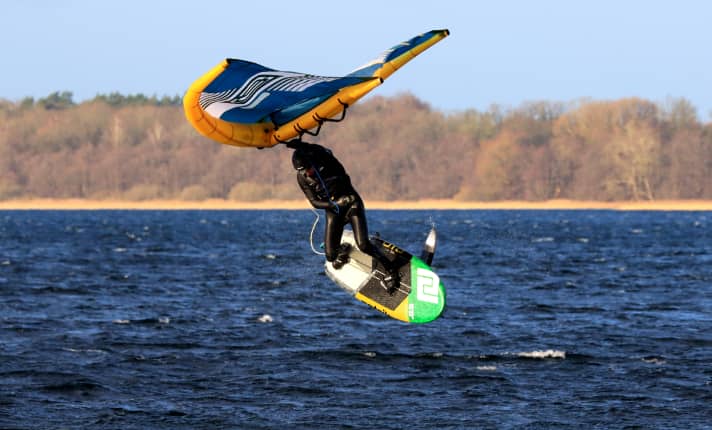
The Patrik brand is probably primarily familiar to windsurfers, but has now significantly expanded its portfolio with wings, foils and boards.
Two box systems and mini tiller - the Patrik A.I.O. on land:
The A.I.O. model is designed in sizes 5'9'' and 6'6'' as a crossover board for windsurf foiling and wingsurfing. In the size with 135 litres (6'6'') we have presented this board to you as part of our big "Test crossover boards" already presented. In the test size with 95 litres (5'2'') there is, as expected, nothing left of the suitability for windsurf foiling, instead the name A.I.O. ("All In One") on the tested 5'2'' refers more to the dual use of wingsurfing/prone surfing. Nevertheless, the wingboard is equipped with a foil box in addition to the usual double rail. This should make it possible to mount fast and maximally stiff race foils.

So if you already have a race-orientated foil with a long fuselage and a head that fits the foil box/tuttle box, you can use it on this board. Of course, the double rail offers more leeway for the right positioning of the foil, and despite the two boxes installed, our test board was comparatively light at a measured 5.85 kilos.
You can find out which strap positions the Patrik A.I.O. offers, why a mini fin is installed in the underwater hull instead of a carrying handle and what there is to say about the construction in our product presentation on our YouTube channel .
On the water:
The rather narrow bow is quite noticeable around the rocker axis and you have to be a little more sensitive when standing up and launching. On the other hand, the wide Patrik A.I.O. with its voluminous rails and thick stern around the longitudinal axis offers a lot of stability. The flat deck is extremely comfortable both when bobbing and foiling. As all conceivable plug positions are available, the board offers the option of a suitable setup for every foil (general tips on the right foil strap setup can be found at HERE ).

Shaper Patrik Diethelm has given the board a sharp trailing edge in the underwater hull, a concept that has also proven itself on windsurfing and windfoil boards. This ensures a clean water release during the planing phase, which results in a pleasantly low driving resistance when pumping and taking off. The Patrik A.I.O. therefore converts pumping strokes and the pull of the wing into propulsion. If you unintentionally drop off or hit a choppy wave while going upwind, the bevelled edges gently send you back up again - a characteristic that not only suits less experienced wing surfers.

For sporty freeriding and manoeuvres such as jibes or turns, the generous board width of 67 centimetres is certainly not a disadvantage. For jumps and freestyle tricks, the board benefits from its low weight in the air, but when landing freestyle tricks, the tail shape with its deep cut-outs doesn't seem quite as forgiving as boards with a conventionally shaped underwater hull.
Conclusion:
The Patrik A.I.O. impresses wingfoil intermediates, sporty freeriders and, above all, racers alike with its sporty performance, low weight and simple riding characteristics. Due to the narrow nose, the tipping stability when starting is somewhat reduced, but the board is also somewhat less susceptible to wind at high speeds. Despite its volume of 95 litres, the board also makes it easy to enter the world of freestyle.
Range of use; weight; racing use
Wearing comfort
Price
Editor's note: The test report was supplemented with some details on 1 February 2022
